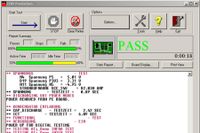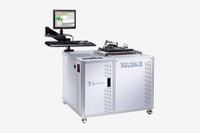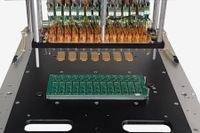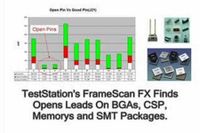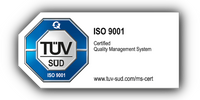Very welcome to
A.T.i. Software GmbH in Munich
Your test house for testing software and hardware solutions
We offer the development of test programs for in-circuit, boundary-scan and functional tests. As special offer, we develop IN-System programmings with a very high performance and a lot more for electrical testing of electronic boards.
Our services comprise consulting, the development of an optimum test concept, the concept development of required test devices (fixtures), the delivery of the solution, system start-up and support at your location.
According to our principle:
„Quality from the very beginning“ we deliver ready-for-use ATE solutions for manufacturing electronic components.
Accompanying - from start to finish!
Targeted consulting tailored to you and your requirements
As a specialized provider of comprehensive consulting services, we have diversified our consulting services. Our consulting team consists of specialists from various fields and works both internally and in correspondence with your company.
The creation of an optimal test concept for your requirements
As a service provider, we pay a great deal of attention to the subject of test concepts and, at the customer's request, carry out an exact analysis of the available development data (circuit diagram, CAD data, etc.) with regard to mechanical and electrical testability.
The professional design of test fixtures
Of course we offer our customers support already in the design and development phase. Especially in case of reduced space on the assembly, the specific placement of test points has a significant influence on the achievable test coverage.
Qualified delivery to your premises - you determine the deadlines
Commissioning on site and under your supervision
Support - assistance even after completion of the project
Our test methods in overview
In-Circuit-Test (ICT)
In the in-circuit test, the assembled printed circuit board is tested for assembly errors. Special technologies (guarding) allow the influence of surrounding components to be eliminated. In this way, test coverage of >90% can be achieved in many cases.
Boundary-Scan-Test (BST)
In the case of complex components such as microcontrollers, even tests for interruptions using in-circuit test methods can only be implemented to a very limited extent. In addition, necessary test points are often omitted for space or EMC reasons.
Active-Scan-Test (AST)
The component test with active scan test is comparable in function to the Boundary Scan Test (BST) according to IEEE 1149.1. The AST can be used with microcontrollers that do not have internal BST logic.
In-System Programming (ISP)
Depending on the devices to be programmed, up to 128 identical devices can be programmed simultaneously using the first two methods mentioned (utility programming). It is also possible to write variable data such as individual serial numbers.
Functional test (FCT)
In the functional test, individual functions of the module can be tested. These include, for example, power supply (switching controller) and communication buses (e.g. RS232, LIN and CAN).
Further services
- Individual training all around the topic of testing
- Call-Center support services and further in-house support if your company lacks workers
- Staff training
- Debugg-support for load relief of your own test-systems

